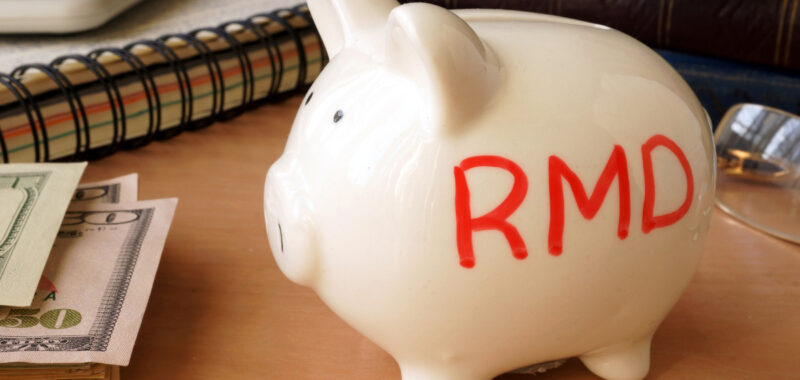You could lower your tax bill and your future RMDs by taking your distribution early in the year.
Many retirement savers choose to take advantage of retirement plans like a 401(k) or IRA while they’re working. The big benefit is that you get to deduct your contributions from your taxes in the year you make them. That can give a lot of people more money to put toward retirement today. You won’t pay any taxes on the investments until you take money out of the account.
Eventually, however, Uncle Sam wants his tax revenue. That’s why the government imposes required minimum distributions, or RMDs, on retirees once they reach a certain age, currently 73 years old. If you inherit an IRA from someone after they become subject to RMDs, you’ll have to take RMDs too.
The law typically requires you to make the withdrawal before the end of each calendar year, but there may be some benefits to getting it out of the way as soon as possible in January. Here are the important factors to consider.

Image source: Getty Images.
How the government calculates your RMD
Before discussing whether taking your RMD in January is a good idea, it’s important to understand how your RMD is determined. Your required minimum distribution depends on at least two factors:
- Your account balance(s) at the end of the previous year
- The age you’ll reach this year
The IRS publishes a table of life expectancy factors, which is a number based on how long the average person your age will live.
If your sole beneficiary for an account is your spouse, and they’re more than 10 years younger than you, then you’ll use a joint life expectancy table based on both your ages to determine your life expectancy factor for your RMD. If you use this table, you’ll have a lower RMD.
The math is simple. Take your account balance from the end of the prior year and divide it by the life expectancy factor in the appropriate IRS table. Most financial institutions will do this calculation for you at the start of each year.
How taking a distribution in January can reduce your RMDs
If you want to reduce your RMDs, you can only do so by reducing the balance in your account at the end of the year. Of course, nobody wants to forego investment gains just to save money on taxes, so it doesn’t make sense to stay out of the market. But taking your RMDs in January could result in a lower account balance at the end of each year over the long run.
The assets in your account will, hopefully, appreciate throughout the year. But if you take your withdrawal earlier in the year, there will be fewer assets to appreciate throughout the rest of the year. As a result, you’ll have a smaller balance in your account, all else being equal. The result is a smaller RMD next year.
This is a particularly useful strategy for those who have RMDs that exceed their expenses, but want to pass on assets to their heirs. Withdrawing earlier in the year and reinvesting the excess RMD in a taxable brokerage account will provide a very tax-efficient asset to leave to your loved ones. When you pass away, those assets get a step-up in cost basis, effectively wiping out the taxes they’d have to pay on the capital gains.
If you gave them the assets in an IRA, they’d have to take their own RMDs on the inherited IRA and pay taxes on the withdrawal each year. Plus, with a few exceptions, they’d have to empty the account within 10 years.
Setting up Roth conversions
Another reason to take your RMD in January is that you can’t make Roth conversions until after you’ve finished taking your RMD. With historically low tax rates set to expire at the end of the year, this may be the last chance for some to take advantage of some very low tax brackets.
Making Roth conversions earlier in the year is often an advantageous move. As mentioned, assets in your accounts tend to go up over time. As such, you’re likely able to convert more shares or more bonds earlier in the year when their prices are lower (assuming the markets appreciate over time).
Once you make a Roth conversion, those assets will likely never be subject to income taxes again. Even if you pass those assets on to your heirs, they won’t have to pay taxes on the distributions. Furthermore, Roth IRAs aren’t subject to RMDs, so you can reduce future RMDs from your traditional retirement accounts.
Should you take your RMD in January?
The above factors may not have that much effect on your financial plans or your tax strategy. If you don’t plan to reinvest your RMD in a taxable brokerage account and you expect to use the entirety of your distribution for your living expenses, then taking your RMD in January versus November or December won’t have nearly as big a financial effect.
But there’s still one important upside to consider for just about everyone. If you take your RMD in January, you’ll have access to that cash now. That can give you some breathing room for emergencies. And if the worst should happen, your beneficiaries won’t have to worry about whether or not the government will come after them for not taking an RMD from your account. That ease of mind may be worth more than any advanced tax planning strategies.

